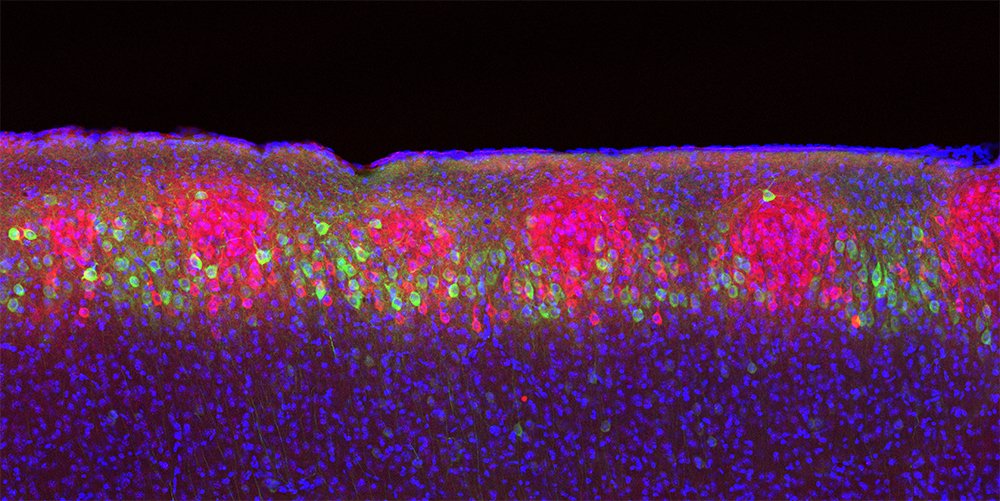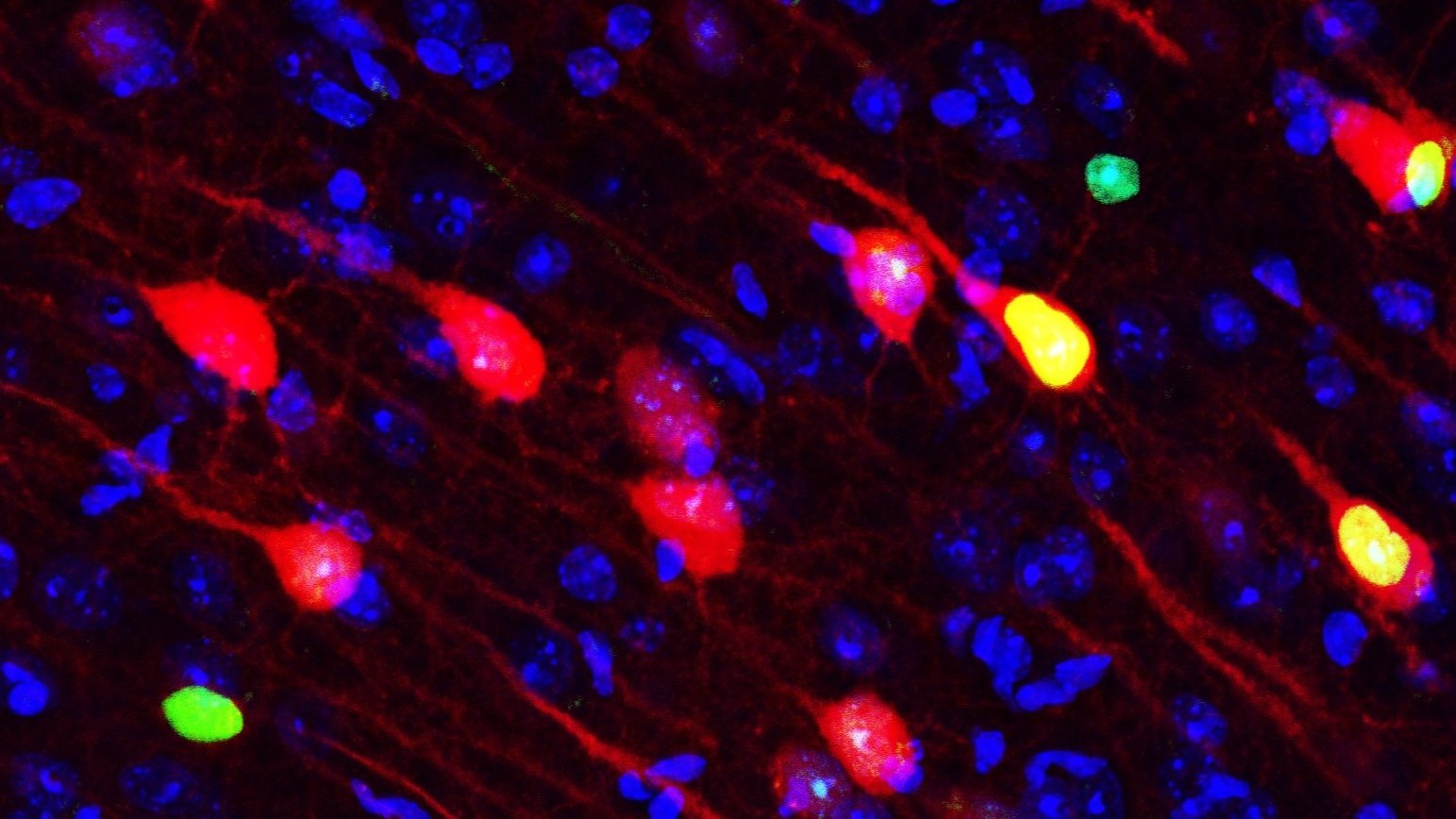
Kitamura Lab
Neural Circuit Genetics and Physiology for Learning and Memory
Neural Circuit Mechanisms for Remote Memory Formation
Neural Representation and Memory for Time and Space in Entorhinal-Cortical Hippocampal Networks
Neurobiological Mechanisms for dysfunction of Entorhinal-Cortical Hippocampal Networks in Alzheimer's Disease
Research
How do we remember episodic memory?
Memory of our lives’ experiences is central to our decision-making process, and severe disruption in memory is a debilitating part of aging and multiple diseases including Alzheimer’s disease and dementia. Lesion and pharmacological studies confirmed the role of the hippocampus in memory formation in rodent models. Subsequent genetic experiments in mice have supported the molecular mechanisms behind the hippocampus’ role in memory, as well as the specific roles of the various hippocampal circuits in memory formation, consolidation and retrieval. From these studies, we learn the entorhinal cortex–hippocampal (EC-HPC) network plays an essential role in episodic memory. Episodic memory consists of associations of objects, space, individual and time. To understand the neural circuit mechanisms of episodic memory, we need to understand how spatial, object, individual or time information are encoded in the neuronal circuits. However, identification of the components of episodic memory at circuits’ level remains unknown. The primary goal of our team is the mapping of specific neuronal populations that encode unique physiological properties in episodic memory in EC-HPC networks and further examine how EC-HPC interacts with the upstream and down stream brain structures for memory processing.
News
2024 Feb- Naoki’s manuscript has been published in Molecular Brain
2024 Jan- Jun’s manuscript has been published in Neuron
2023 July- Joe’s manuscript has been published in Nature Communications
2023 May- Hisa’s manuscript has been published in Cell Reports Methods
2022 July- Takashi received the distinguished Investigator award of Japanese Society for Neurochemistry
2022 April- Joe’s manuscript has been published in Neuron
2022 May- Lab website open
2017 May- Kitamura lab open

Lab Members
Faculty
Takashi Kitamura, Ph.D. Associate Professor Google scholar Faculty Profile
Sachie Ogawa, Ph.D. Assistant Professor Google scholar Faculty Profile
Postdoc
Hisayuki Osanai, Ph.D. Google scholar (2018-current)
Ambrosia Simmons, M.D. Ph.D. Google scholar (2021-current)
Indrajith Nair, Ph.D. Google scholar (2023-current)
Miari Arai, Ph.D. Google scholar (2023-current)
Undergraduate
Kritika Ramesh (2022-current, Green Fellow, University of Texas at Dallas)
UTSW Collaborator
Mark Henkemeyer, Ph.D. Professor Faculty Profile Henkemeyer Lab website
Carol Tamminga, M.D. Professor Faculty Profile Tamminga Lab website
Jun Yamamoto, Ph.D. Assistant Professor Faculty Profile Yamamoto Lab website
Alumni
Yoshiyuki Omura, M.D. Ph.D. (2018-2024)
Naoki Yamamoto, Ph.D. (2018-2024), Assistant Professor at Kyushu University, JPN
Jun Yokose, Ph.D. (2018-2024), Assistant Professor at University of Toyama, JPN
Joseph Terranova, Ph.D. (2017-2023), Assistant Professor at Midwestern University, USA
William Marks, Ph.D. (2018-2023), Assistant Professor of Instruction at University of Texas Dallas, USA
Ryang Kim, Ph.D. (2020-2022), Assistant Professor at University of Tokyo, JPN
Jun Yamamoto, Ph.D. (2017-2020), Assistant Professor at University of Texas Southwestern Medical Center, USA
Norimichi Ito, Ph.D. (2019-2020), Assistant Professor at Nagoya University, JPN
Tony Lopez (Rotation Student in 2023)
Simran Rastogi (Rotation Student in 2022)
Alexander Pope (Rotation Student in 2020)

Publications
Yamamoto N, Yokose J, Ramesh K, Kitamura T, & Ogawa SK (2024). Outer layer of Vb neurons in medial entorhinal cortex project to hippocampal dentate gyrus in mice. Mol Brain. 2024 Feb 5;17(1):5. doi: 10.1186/s13041-024-01079-5.
Yokose J, Marks WD, & Kitamura T. (2024). Visuotactile integration facilitates mirror-induced self-directed behavior through activation of hippocampal neuronal ensembles in mice. Neuron. 112(2), 306-318
Yokose J, Yamamoto N, Ogawa SK, & Kitamura T. (2023). Optogenetic activation of dopamine D1 receptors in island cells of medial entorhinal cortex inhibits temporal association learning. Molecular Brain. 2023 Nov 14;16(1):78. doi: 10.1186/s13041-023-01065-3.
Terranova, J. I., Yokose, J., Osanai, H., Ogawa, S. K., & Kitamura, T. (2023). Systems consolidation induces multiple memory engrams for a flexible recall strategy in observational fear memory in male mice. Nature Communications. 14:3976, DOI: 10.1038/s41467-023-39718-5
Osanai H, Yamamoto J. & Kitamura T. (2023). Extracting electromyographic signals from multi-channel LFP using independent component analysis without direct muscular recording. Cell Reports Methods. Published: May 17, 2023, DOI: https://doi.org/10.1016/j.crmeth.2023.100482
Osanai H, Nair IR, & Kitamura T. (2023). Dissecting cell-type-specific pathways in medial entorhinal cortical-hippocampal network for episodic memory. Journal of Neurochemistry. May 30. doi: 10.1111/jnc.15850
Terranova, J. I., Yokose, J., Osanai, H., Marks, W. D., Yamamoto, J., Ogawa, S. K., & Kitamura, T. (2022). Hippocampal-amygdala memory circuits govern experience-dependent observational fear. Neuron. 110(8):1416-1431
Marks, W. D., Yokose, J., Kitamura, T., & Ogawa, S. K. (2022). Neuronal Ensembles Organize Activity to Generate Contextual Memory. Frontiers in Behavioral Neuroscience, 75.
Yokose, J., Terranova, J. I., & Kitamura, T. (2021). Learning and memory: Shuffling memory traces by relearning. Current Biology, 31(24), R1588-R1591.
Marks, W. D., Yamamoto, N., & Kitamura, T. (2021). Complementary roles of differential medial entorhinal cortex inputs to the hippocampus for the formation and integration of temporal and contextual memory (Systems Neuroscience). European Journal of Neuroscience, 54(8), 6762-6779.
Yokose, J., Marks, W. D., Yamamoto, N., Ogawa, S. K., & Kitamura, T. (2021). Entorhinal cortical Island cells regulate temporal association learning with long trace period. Learning & Memory, 28(9), 319-328.
Yamamoto, N., Marks, W. D., & Kitamura, T. (2021). Cell-type-specific optogenetic techniques reveal neural circuits crucial for episodic memories. In Optogenetics (pp. 429-447). Springer, Singapore.
Kim, R., Yamamoto, N., & Kitamura, T. (2020). Extra neural ensemble disrupts memory recall. Nature neuroscience, 23(8), 905-907.
Marks, W. D., Osanai, H., Yamamoto, J., Ogawa, S. K., & Kitamura, T. (2019). Novel nose poke-based temporal discrimination tasks with concurrent in vivo calcium imaging in freely moving mice. Molecular Brain, 12(1), 1-5.
Terranova, J. I., Ogawa, S. K., & Kitamura, T. (2019). Adult hippocampal neurogenesis for systems consolidation of memory. Behavioural Brain Research, 372, 112035.
Ghandour K, Ohkawa N, Fung C. C. A., Asai H, Saitoh Y, Takekawa T, Okubo-Suzuki R, Soya S, Nishizono H, Matsuo M, Osanai M, Sato M, Ohkura M, Nakai J, Hayashi Y, Sakurai T, Kitamura T, Fukai T & Inokuchi K. (2019). Orchestrated ensemble activities constitute a hippocampal memory engram. Nat Communications. 10(1):2637
Osanai, H., Kitamura, T., & Yamamoto, J. (2019). Hybrid microdrive system with recoverable opto-silicon probe and tetrode for dual-site high density recording in freely moving mice. Journal of Visualized Experiments, (150), e60028.
Tonegawa S, Morrissey MD., & Kitamura T. (2018). The role of engram cells in the systems consolidation of memory. Nature Review Neuroscience. 2018 19(8):485-498.
Alam M.J., Kitamura T, Saitoh Y, Ohkawa N, Kondo T. & Inokuchi K. (2018). Adult neurogenesis conserves the hippocampal learning capacity, Journal of Neuroscience, 38, 31, 6854-6863
Kitamura, T. (2017). Driving and regulating temporal association learning coordinated by entorhinal-hippocampal network. Neuroscience research, 121, 1-6.
Before Kitamura Lab starts
Roy DS, Kitamura T, Okuyama T, Ogawa SK, Sun C, Obata Y, Yoshiki A & Tonegawa S. Distinct neural circuits for the formation and retrieval of episodic memories. Cell, 170, 5, 1000-1012, 2017
Kitamura T, Ogawa SK, Roy DS, Okuyama T, Morrissey MD, Smith LM, Redondo RL & Tonegawa S. Engrams and circuits crucial for systems consolidation of a memory. Science, 356, 6333, 73-78, 2017
Okuyama T, Kitamura T, Roy DS, Itohara S & Tonegawa S. Ventral CA1 neurons store social memory. Science, 353, 6307, 1536-1541, 2016
Kitamura T, Sun C, Martin J, Kitch LJ, Schnitzer MJ & Tonegawa S. Entorhinal cortical ocean cells encode specific contexts and drive context-specific fear memory. Neuron, 87, 6, 1317-1331, 2015
Sun C, Kitamura T, Yamamoto J, Martin J, Pignatelli M, Kitch LJ, Schnitzer MJ & Tonegawa S. Distinct speed dependence of entorhinal island and ocean cells, including respective grid cells. Proc Natl Acad Sci USA, 112, 30, 9466-9471, 2015
Kitamura T, MacDonald CJ & Tonegawa S. Entorhinal-hippocampal neuronal circuits bridge temporally discontiguous events. Learning & Memory (Cold Spring Harbor, N.Y.), 22, 9, 438-43, 2015
Sariñana J, Kitamura T, Künzler P, Sultzman L & Tonegawa S. Differential roles of the dopamine 1-class receptors, D1R and D5R, in hippocampal dependent memory. Proc Natl Acad Sci USA, 111, 22, 8245-8250, 2014
Kitamura T, Pignatelli M, Suh J, Kohara K, Yoshiki A, Abe K & Tonegawa S. Island cells control temporal association memory. Science, 343, 6137, 896-901, 2014
Kitamura T & Inokuchi K. Role of adult neurogenesis in hippocampal-cortical memory consolidation. Mol Brain, 7, 13, 2014
Kohara K, Pignatelli M, Rivest AJ, Jung HY, Kitamura T, Suh J, Frank D, Kajikawa K, Mise N, Obata Y, Wickersham IR & Tonegawa S. Cell type–specific genetic and optogenetic tools reveal hippocampal CA2 circuits. Nature Neuroscience, 17, 2, 269-279, 2014
Kitamura T, Okubo-Suzuki R, Takashima N, Murayama A, Hino T, Nishizono H, Kida S & Inokuchi K. Hippocampal function is not required for the precision of remote place memory. Mol Brain, 5, 15, 2012
Sagata NA, Iwaki A, Aramaki T, Takao K, Kura S, Tsuzuki T, Kawakami R, Ito I, Kitamura T, Sugiyama H, Miyakawa T & Fukumaki Y. Comprehensive behavioural study of GluR4 knockout mice: implication in cognitive function. Genes Brain Behav, 9, 8, 899-909, 2010
Kitamura T, Saitoh Y, Murayama A., Sugiyama H & Inokuchi K. LTP induction within a narrow critical period of immature stages enhances the survival of newly generated neurons in the adult rat dentate gyrus. Mol Brain, 3, 13, 2010
Kitamura T, Saitoh Y, Takashima N, Murayama A, Niibori Y, Ageta H, Sekiguchi M, Sugiyama H & Inokuchi K. Adult neurogenesis modulates the hippocampus-dependent period of associative fear memory. Cell, 139, 4, 814-827, 2009
Kitamura T & Sugiyama H. Running wheel exercises accelerate neuronal turnover in mouse dentate gyrus. Neurosci Res, 56, 1, 45-52, 2006
Kitamura T, Mishina M & Sugiyama H. Dietary restriction increases hippocampal neurogenesis by molecular mechanisms independent of NMDA receptors. Neurosci Lett, 393, 2-3, 2006
Kitamura T, Mishina M & Sugiyama H. Enhancement of neurogenesis by running wheel exercises is suppressed in mice lacking NMDA receptor e1 subunit. Neurosci Res, 47, 1, 55-63, 2003